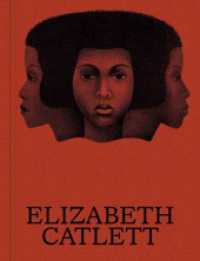- ホーム
- > 洋書
- > 英文書
- > Cinema / Film
基本説明
Antoine de Baecque proposes a new historiography of cinema, investigating how cinematic representation changes the very nature of history. Whether portraying events that occurred in the past or stories that were unfolding before their eyes, certain twentieth-century film-makers have used a particular mise-en-scéne to give form to history.
Full Description
Antoine de Baecque proposes a new historiography of cinema, exploring film as a visual archive of the twentieth century, as well as history's imprint on the cinematic image. Whether portraying events that occurred in the past or stories unfolding before their eyes, certain twentieth-century filmmakers used a particular mise-en-scene to give form to history, becoming in the process historians themselves. Historical events, in turn, irrupted into cinema. This double movement, which de Baecque terms the "cinematographic form of history," disrupts the very material of film, much like historical events disturb the narrative of human progress.
De Baecque defines, locates, and interprets cinematographic forms in seven distinct bodies of cinema: 1950s modern cinema and its conjuring of the morbid trauma of war; French New Wave and its style, which became the negative imprint of the malaise felt by young contemporaries of the Algerian War; post-Communist Russian films, or the "de-modern" works of catastroika; contemporary Hollywood films that attach themselves to the master fiction of 9/11; the characteristic mise en forme of filmmaker Sacha Guitry, who, in Si Versailles m'etait conte (1954), filmed French history from inside its chateau; the work of Jean-Luc Godard, who evoked history through his own museum memory of the twentieth century; and the achievements of Peter Watkins, the British filmmaker who reported on history like a war correspondent. De Baecque's introduction clearly lays out his theoretical framework, a profoundly brilliant conceptualization of the many ways cinema and history relate.
Contents
Prelude: The Tree of History Introduction: The Cinematographic Forms of History 1. Foreclosed Forms: How Images of Mass Death Reemerged in Modern Cinema 2. From Versailles to the Silver Screen: Sacha Guitry, Historian of France 3. "Me? Uh, Nothing!" The French New Wave, Politics, and History 4. Peter Watkins, Live from History: The Films, Style, and Method of Cinema's Special Correspondent 5. The Theory of Sparks: A History in Images, According to Jean-Luc Godard 6. Demodern Aesthetics: Filming the End of Communism 7. America Unraveled: Master Fictions in Contemporary Hollywood Cinema Conclusion: All Histories Are Possible Notes Illustration Credits Index








